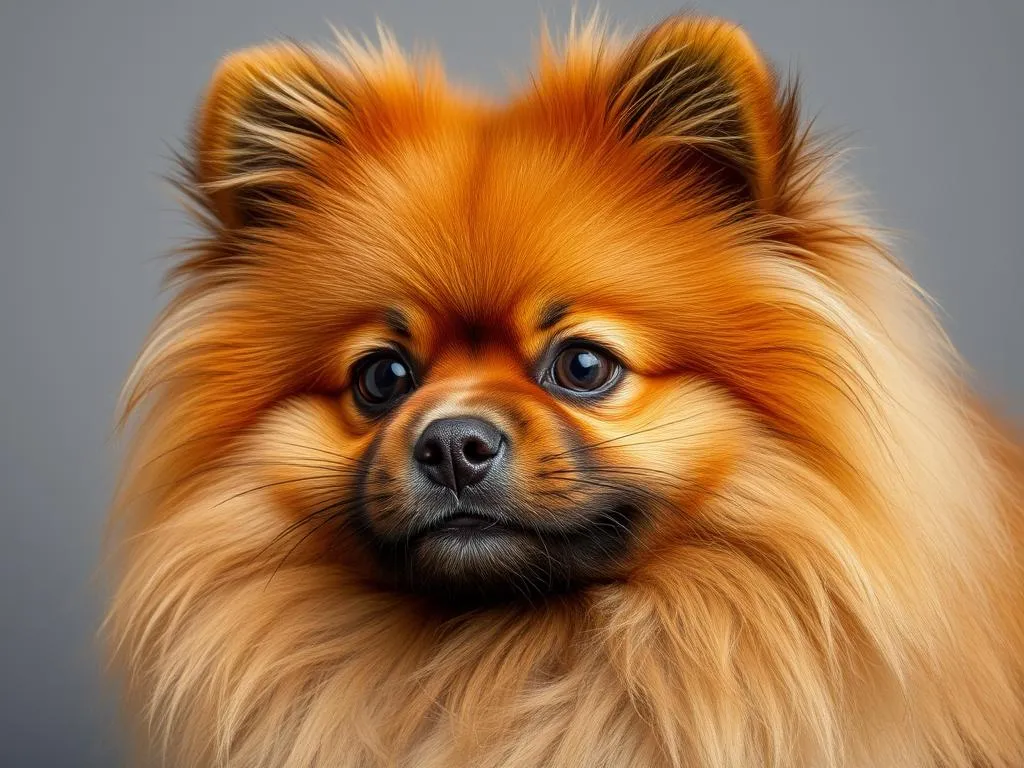
Introduction
Understanding various dog breeds is essential for anyone considering adopting a dog. A dog breed is defined by specific characteristics, including appearance, behavior, and temperament, which can significantly influence your experience as a dog owner.
Overview of the Pomeranian Breed
The Pomeranian is a small dog breed that has gained immense popularity over the years. Originating from the Arctic region, the breed was named after the Pomerania region in northern Europe. Pomeranians are known for their fluffy double coats, fox-like faces, and lively personalities.
Focus on Brown Pomeranians
Among the various color variations of Pomeranians, the brown Pomeranian stands out for its unique hue and charm. This blog post will delve deeper into the characteristics and considerations of owning a brown Pomeranian, helping potential owners make informed decisions.
Understanding Dog Breeds
What is a Dog Breed?
A dog breed is a group of domestic dogs that share similar characteristics, such as size, color, coat type, and temperament. Breeds are often standardized by kennel clubs, which establish breed standards that define the ideal characteristics of each breed. These standards are crucial for breeders and dog shows alike.
Why Choose a Specific Breed?
When selecting a dog breed, it’s vital to consider factors such as size, temperament, and activity level. Some breeds are more suited for families with children, while others excel in apartment living. Understanding these factors can help potential owners choose a breed that fits their lifestyle and preferences.
The Role of Genetics in Dog Breeds
Genetics play a significant role in determining the traits of dog breeds. Purebred dogs inherit characteristics that are consistent with their breed standards. In contrast, mixed breeds can display a variety of traits from their parent breeds. Knowing the genetic background of a dog can provide insights into its behavior, health, and care needs.
The Pomeranian Breed
History of the Pomeranian
The Pomeranian’s lineage can be traced back to larger Spitz-type dogs used for herding and pulling sleds. Over time, these dogs were bred down in size, resulting in the small, fluffy companion we know today. The breed gained popularity in the 18th century, particularly among European royalty, and has continued to thrive as a beloved pet.
General Characteristics
Pomeranians are small dogs, typically weighing between 3 to 7 pounds and standing about 8 to 12 inches tall. They are known for their vibrant personalities, often described as curious, friendly, and intelligent. Their fluffy double coat is one of their most striking features, requiring regular grooming to keep it healthy and free of mats.
Care and Maintenance
Taking care of a Pomeranian involves grooming, feeding, and providing regular veterinary care. Their thick coats require brushing several times a week to prevent tangles and matting. Additionally, Pomeranians thrive on high-quality dog food that meets their nutritional needs. Regular vet check-ups are essential for monitoring their health and ensuring they receive necessary vaccinations.
Brown Pomeranians
Unique Characteristics of Brown Pomeranians
The brown Pomeranian is a stunning variation of the breed, characterized by its rich chocolate or deep brown coat. This unique coloring can range from light fawn to dark chocolate, making each brown Pomeranian distinct. The brown coat can also be complemented by various markings, adding to their appeal.
In comparison to other Pomeranian colors, brown Pomeranians often attract attention due to their rarity and elegance. While common colors include orange, black, and cream, the brown variation tends to be less prevalent, making them more sought after by dog enthusiasts.
Popularity and Demand
Over the past few years, brown Pomeranians have seen a surge in popularity. Factors contributing to their desirability include their unique appearance and the growing trend of social media influencers showcasing their brown Pomeranians. As a result, this color variation has become a favorite among dog lovers looking for a companion with a distinct look.
Health Considerations
Like all Pomeranians, brown Pomeranians can be prone to certain health issues, including dental problems, heart disease, and patellar luxation. While color itself does not directly influence these health issues, it’s crucial for owners to be aware of these potential concerns. Regular veterinary check-ups, a balanced diet, and proper dental care can help maintain the health of a brown Pomeranian.
Training and Socialization
Importance of Early Training
Early training and socialization are vital for Pomeranians, as they help shape their behavior and personality. Introducing your brown Pomeranian to various environments, people, and other animals can foster confidence and reduce anxiety.
Effective Training Techniques
Using positive reinforcement techniques, such as treats and praise, can be particularly effective for training Pomeranians. These small dogs are intelligent and eager to please, making them relatively easy to train when approached with patience and encouragement. Common behavioral challenges include barking and stubbornness, but consistent training can help mitigate these issues.
Living with a Brown Pomeranian
Ideal Living Conditions
Brown Pomeranians can adapt to various living conditions, but they thrive best in environments where they receive ample attention and exercise. They are suitable for apartment living as long as they get regular walks and playtime. A safe, enclosed yard is also a great space for them to explore and run.
Interaction with Family and Other Pets
Brown Pomeranians typically get along well with children and other pets, making them excellent family companions. However, early socialization is key to ensuring they develop friendly interactions. Introducing your Pomeranian to various family members and pets can help foster a harmonious household.
Travel and Outings
Traveling with a Pomeranian can be a delightful experience. Due to their small size, they can easily accompany you on trips. When traveling, ensure you have a secure crate or carrier, and always prioritize their safety during car rides. Taking breaks during long journeys allows your brown Pomeranian to stretch their legs and relieve themselves.
Conclusion
In summary, owning a brown Pomeranian can be a rewarding experience filled with joy and companionship. Their unique characteristics, coupled with their playful and affectionate nature, make them a delightful addition to any home. Potential owners should consider the breed’s traits and care needs before adopting, ensuring they can provide a loving and supportive environment for their new furry friend.
FAQs
What is the average life expectancy of a brown Pomeranian?
The average lifespan of a brown Pomeranian is typically around 12 to 16 years, depending on genetics and overall care. Providing a balanced diet, regular exercise, and routine vet visits can help ensure a long and healthy life.
Are brown Pomeranians more prone to health issues?
While health issues can affect Pomeranians of any color, certain genetic predispositions may arise. It’s essential to choose a reputable breeder who conducts health screenings to minimize the risk of inherited health conditions.
How much should I expect to pay for a brown Pomeranian?
The cost of a brown Pomeranian can vary based on factors such as breeder reputation, location, and lineage. Generally, prices can range from $1,000 to $5,000, depending on these factors.
Can brown Pomeranians be left alone for long periods?
Pomeranians, including brown variations, can experience separation anxiety if left alone for extended periods. It’s important to gradually acclimate them to alone time and consider pet sitters or doggy daycare if you’ll be away for long durations.
What are the best training methods for a Pomeranian?
Positive reinforcement techniques are highly effective for training Pomeranians. Utilizing treats, praise, and play can motivate them to learn commands and behaviors. Consistency and patience are crucial for successful training sessions.
With a thorough understanding of the breed, potential owners can enjoy the delightful experience of welcoming a brown Pomeranian into their lives.









